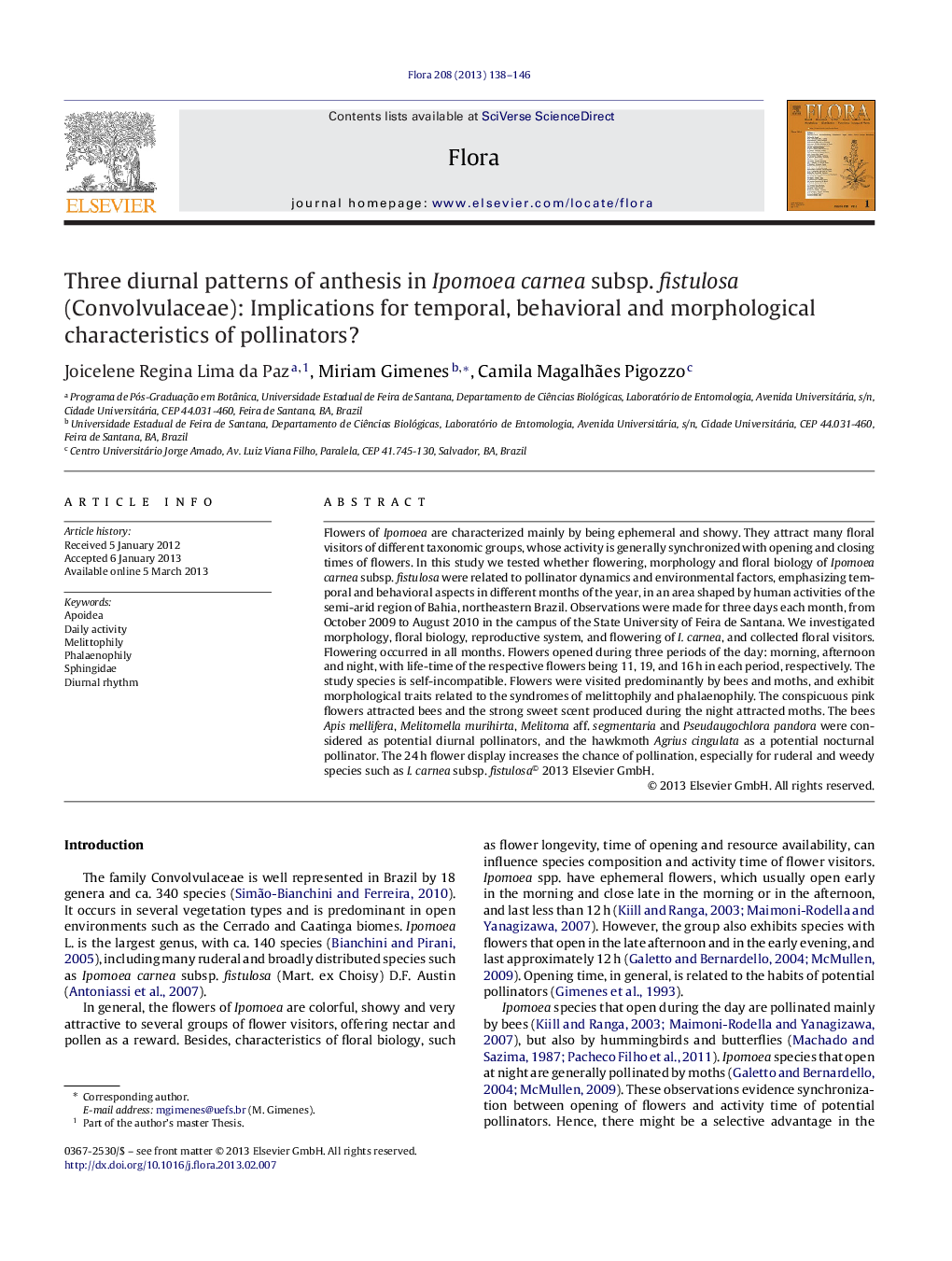| Article ID | Journal | Published Year | Pages | File Type |
|---|---|---|---|---|
| 2179544 | Flora - Morphology, Distribution, Functional Ecology of Plants | 2013 | 9 Pages |
Flowers of Ipomoea are characterized mainly by being ephemeral and showy. They attract many floral visitors of different taxonomic groups, whose activity is generally synchronized with opening and closing times of flowers. In this study we tested whether flowering, morphology and floral biology of Ipomoea carnea subsp. fistulosa were related to pollinator dynamics and environmental factors, emphasizing temporal and behavioral aspects in different months of the year, in an area shaped by human activities of the semi-arid region of Bahia, northeastern Brazil. Observations were made for three days each month, from October 2009 to August 2010 in the campus of the State University of Feira de Santana. We investigated morphology, floral biology, reproductive system, and flowering of I. carnea, and collected floral visitors. Flowering occurred in all months. Flowers opened during three periods of the day: morning, afternoon and night, with life-time of the respective flowers being 11, 19, and 16 h in each period, respectively. The study species is self-incompatible. Flowers were visited predominantly by bees and moths, and exhibit morphological traits related to the syndromes of melittophily and phalaenophily. The conspicuous pink flowers attracted bees and the strong sweet scent produced during the night attracted moths. The bees Apis mellifera, Melitomella murihirta, Melitoma aff. segmentaria and Pseudaugochlora pandora were considered as potential diurnal pollinators, and the hawkmoth Agrius cingulata as a potential nocturnal pollinator. The 24 h flower display increases the chance of pollination, especially for ruderal and weedy species such as I. carnea subsp. fistulosa© 2013 Elsevier GmbH.
